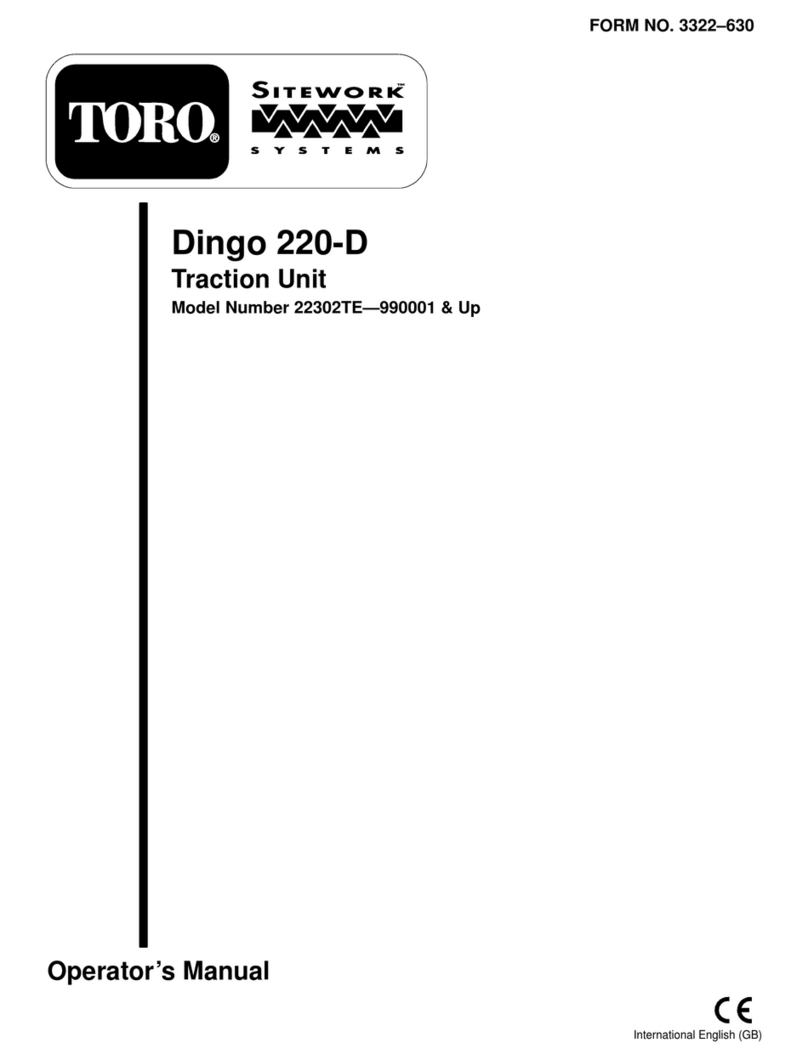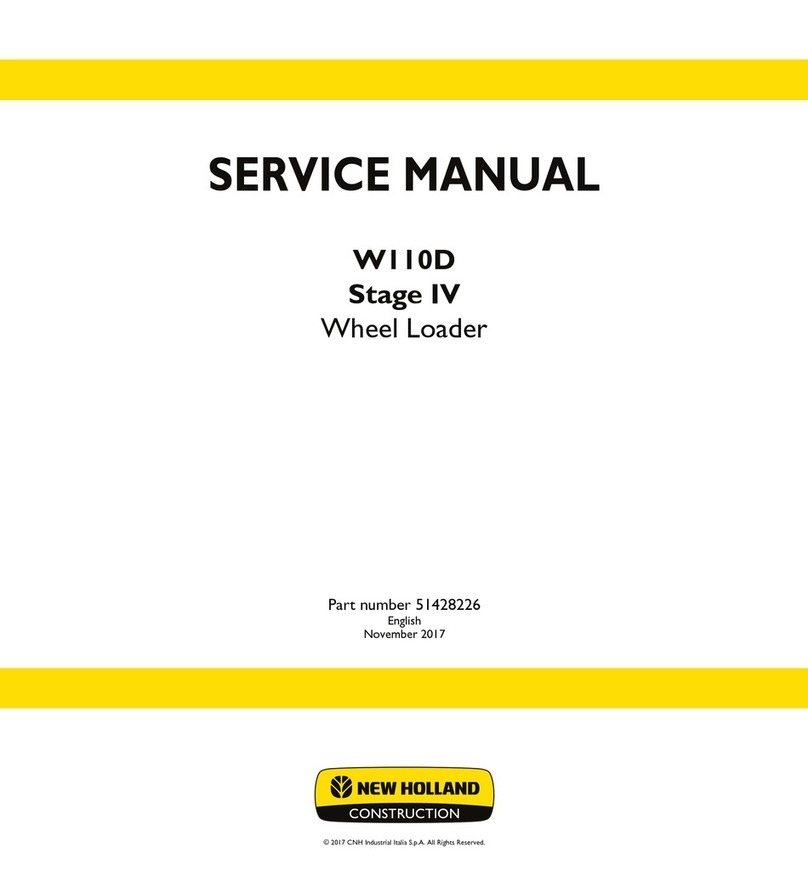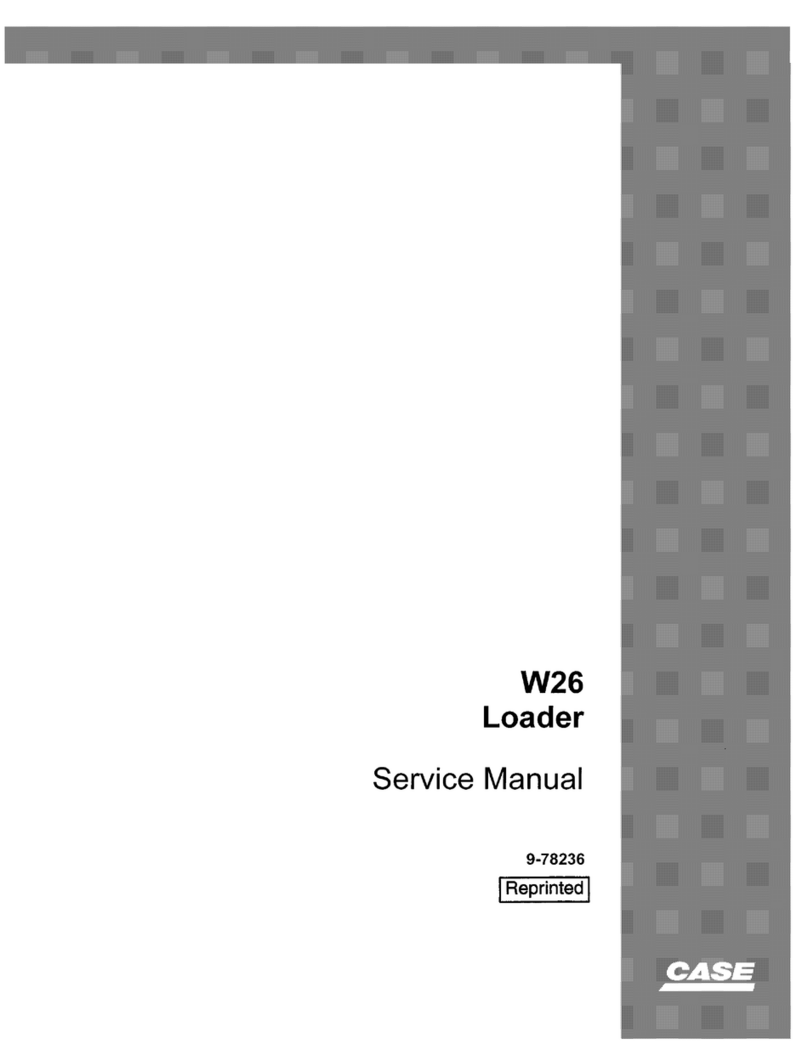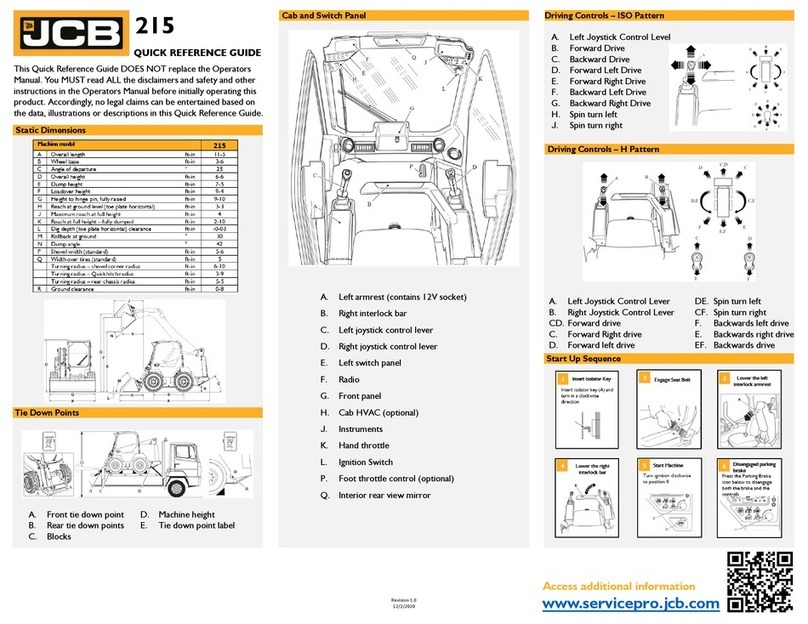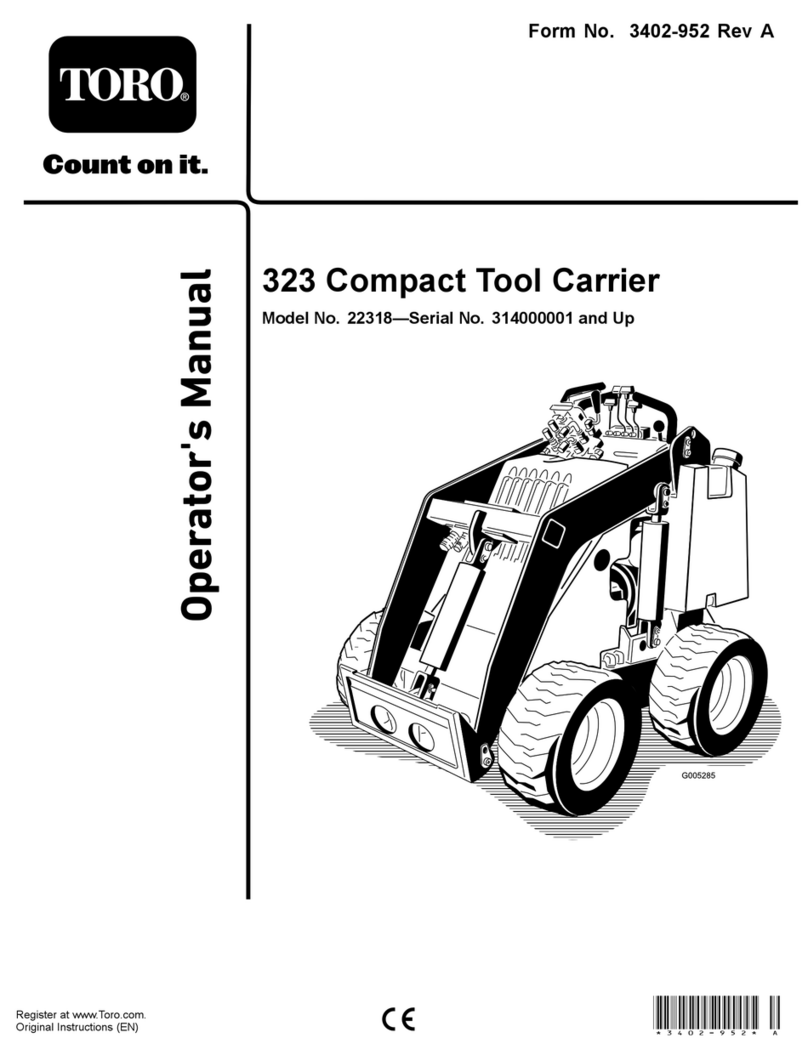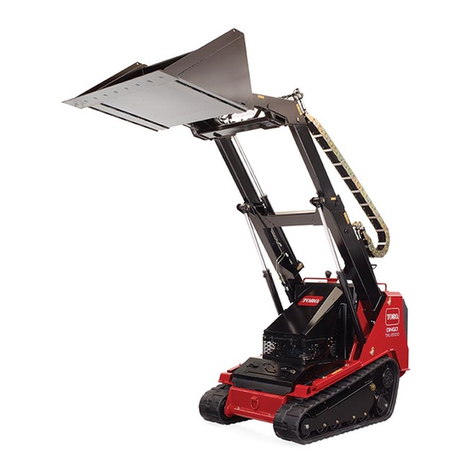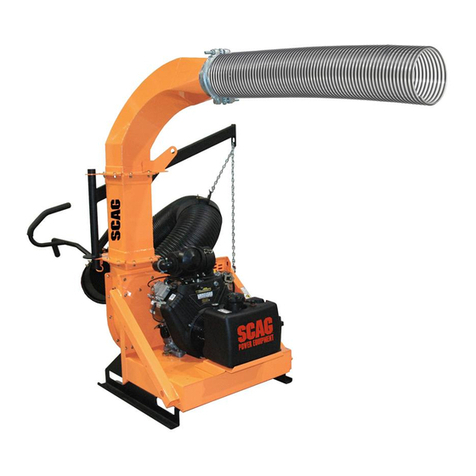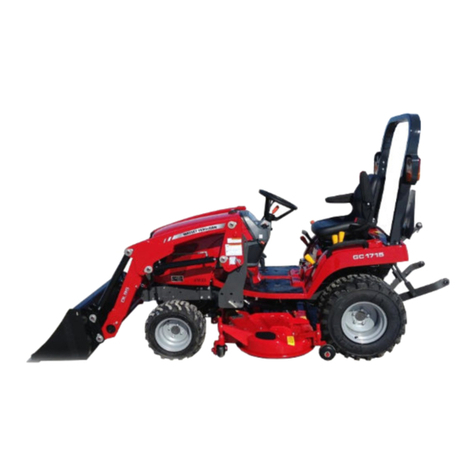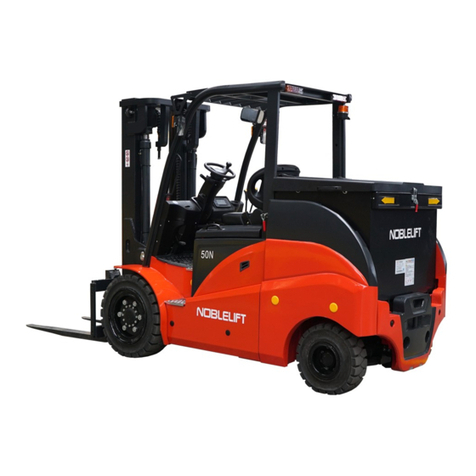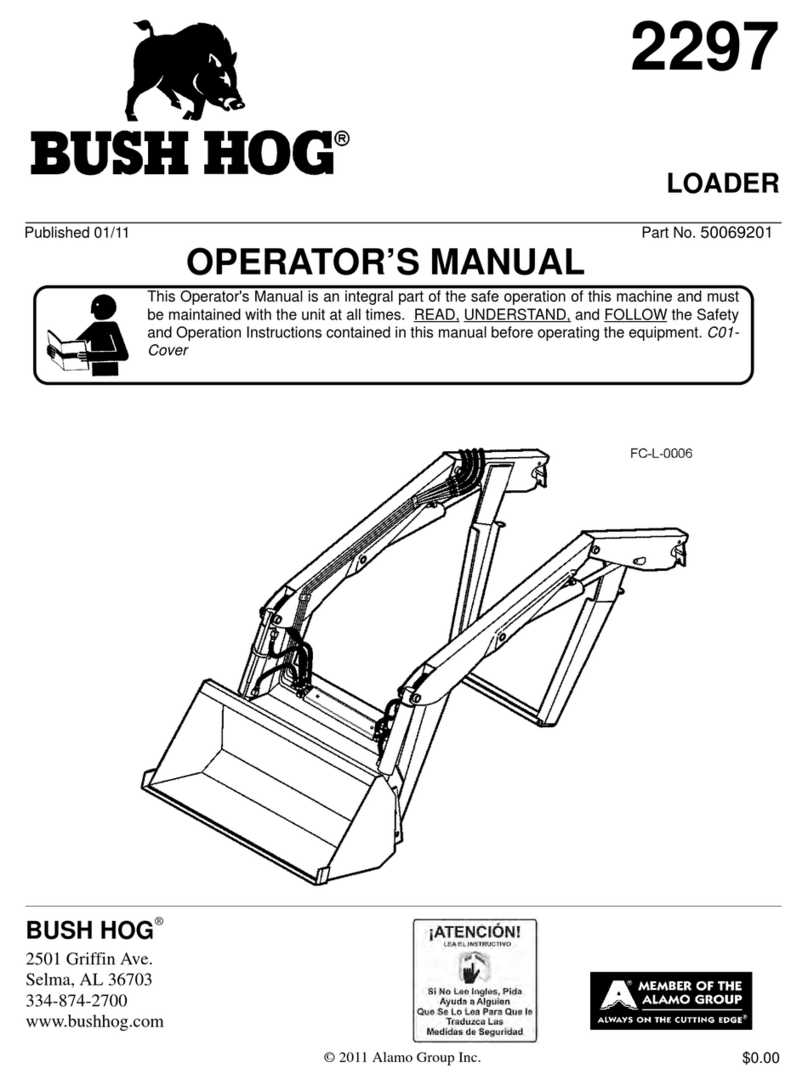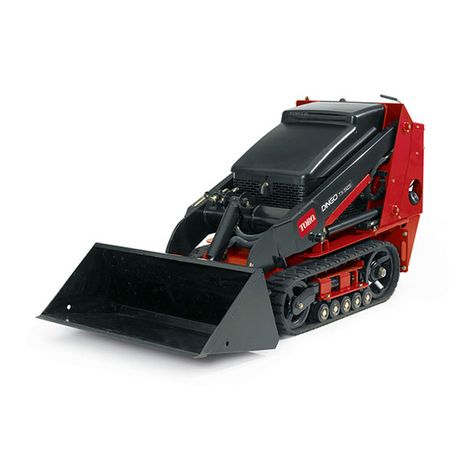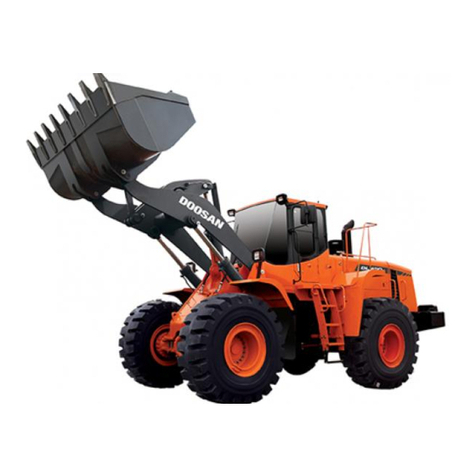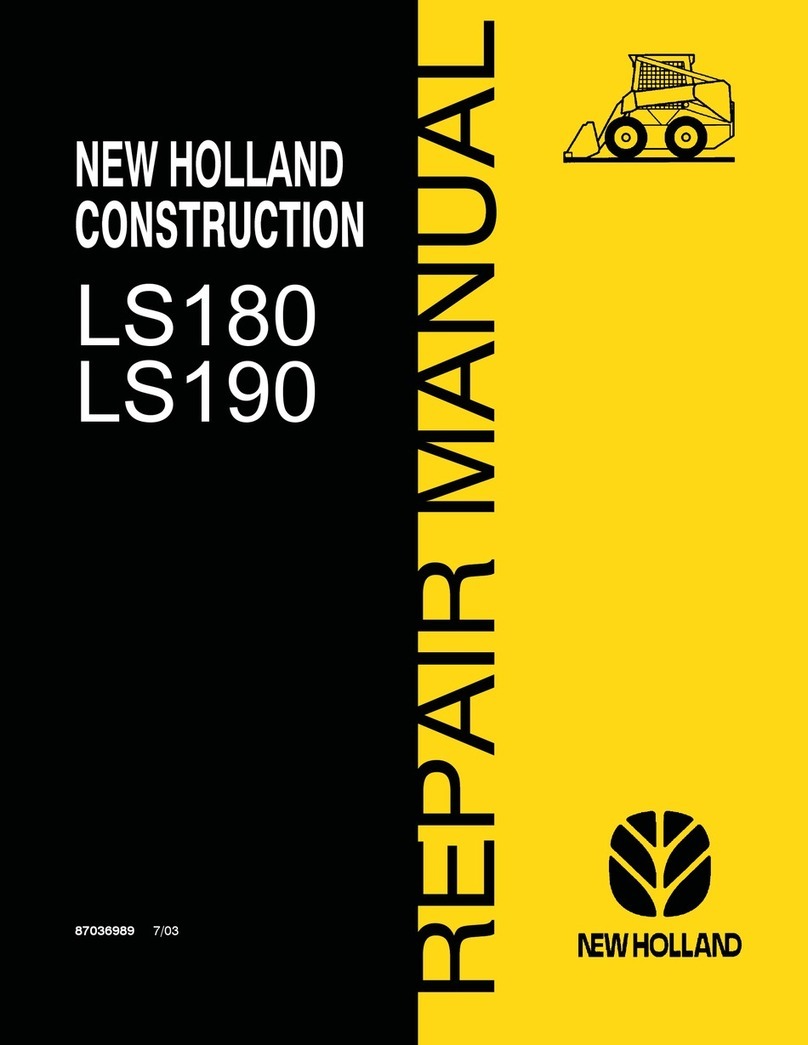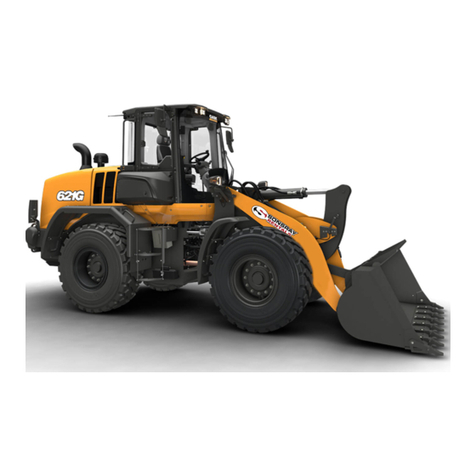TEXIO LSG SERIES User manual

LSG SERIES
INSTRUCTIONMANUAL
ELECTRONIC LOAD
LSG SERIES
LSG-175
LSG-350
LSG-1050
LSG-2100S
B71-0408-01

■ About a trademark, a registered trademark
A company name and the brand name mentioned in this instruction
manual are the trademark or the registered trademark of each
company or group in each country and region.
■ About this instruction manual
When copying the part or all of contents of this instruction manual,
seek the copyright holder.
In addition, the specifications of the product and the contents of this
instruction manual are subject to change without notice for
improvement. Please check to our website for the latest version.
■ About Version of LSG Series
This manual will correspond to the Ver 1.27 the firmware of LSG series.

CONTENTS
USING THE PRODUCT SAFELY························································Ⅰ-Ⅳ
1. GETTING STARTED............................................................... 1
1-1. LSG Series Introduction ...................................................... 1
1-1-1. Model Line Up...............................................................................1
1-1-2. Main Features...............................................................................1
1-2. Accessories ........................................................................ 2
1-2-1. Accessories...................................................................................2
1-2-2. Package Contents ........................................................................3
1-3. Appearance......................................................................... 4
1-3-1. LSG Series Front Panel................................................................4
1-3-2. Rear Panel....................................................................................7
1-3-3. Display..........................................................................................9
1-4. First Time Use Instructions ................................................ 10
1-4-1. Rack Mount Kits..........................................................................10
1-4-2. Power Up and Self Test..............................................................12
1-4-3. Load Default Settings .................................................................12
1-4-4. Setting the Date and Time..........................................................13
1-4-5. Load Wiring.................................................................................14
1-4-6. Load Wire Connections ..............................................................16
1-4-7. Using the Front Panel Input Terminals.......................................17
1-4-8. Using the Rear Panel Input Terminals........................................18
1-4-9. Using the Terminal Cover(PEL -011) .........................................18
1-4-10. Using the Terminal Cover (PEL -013) ......................................20
1-4-11. Remote Sense..........................................................................21
1-4-12. Firmware Update ......................................................................22
1-4-13. Conventions..............................................................................23
1-4-14. Help Menu.................................................................................27
2. OPERATION ........................................................................ 28
2-1. Basic Operation ................................................................ 28
2-1-1. CC Mode.....................................................................................28
2-1-2. CR Mode.....................................................................................29
2-1-3. CR Units......................................................................................30
2-1-4. CV Mode.....................................................................................31
2-1-5. CP Mode.....................................................................................32
2-1-6. +CV Mode...................................................................................33
2-1-7. Turning on the Load....................................................................34
2-1-8. Shorting the Load .......................................................................34
2-1-9. Safety Short................................................................................35

2-1-10. Short Key Configuration............................................................36
2-1-11. Short Function Enable/Disable.................................................36
2-1-12. Locking the Front Panel Controls .............................................36
2-2. Basic Configuration ........................................................... 37
2-2-1. Select the Switching Function.....................................................37
2-2-2. Select the Display Units for Dynamic Mode Levels....................39
2-2-3. Select the Switching Time Configuration for Dynamic Mode .....40
2-2-4. Slew Rate....................................................................................40
2-2-5. CV Mode Response Speed........................................................41
2-2-6. CC,CR and CP Mode Response Speed.....................................42
2-3. Advanced Configuration Settings ....................................... 42
2-3-1. Soft Start Setting.........................................................................42
2-3-2. Von Voltage Settings ..................................................................43
2-3-2-1. Von Voltage Level ...................................................................43
2-3-2-2. Von Voltage Latch ...................................................................43
2-3-2-3. Von Voltage Delay...................................................................44
2-3-3. Timer Functions..........................................................................44
2-3-3-1. Count Time..............................................................................44
2-3-3-2. Cut Off Time ............................................................................45
2-3-4. Auto Load Configuration.............................................................45
2-3-5. Load Off (Mode) and Load Off (Range)......................................46
2-4. Step Resolution Configuration ........................................... 46
2-4-1. Cursor Mode Configuration.........................................................46
2-4-2. Step Mode Configuration............................................................47
2-5. Protection Settings............................................................ 48
2-5-1. OCP............................................................................................48
2-5-2. OPP ............................................................................................49
2-5-3. UVP.............................................................................................50
2-5-4. UVP Ring Time...........................................................................50
2-5-5. OVP ............................................................................................51
2-5-6. UnReg.........................................................................................51
2-5-7. Para ............................................................................................52
2-5-8. RVP.............................................................................................52
2-6. System Settings ................................................................ 53
2-6-1. Sound Settings ...........................................................................53
2-6-1-1. Speaker Settings .....................................................................53
2-6-1-2. Alarm Tone Settings................................................................53
2-6-2. Contrast and Brightness .............................................................54
2-6-3. Control Settings ..........................................................................54
2-6-4. Language Settings......................................................................54
2-6-5. Input/Output Trigger Settings......................................................54
2-6-5-1. Trigger In Delay.......................................................................54

2-6-5-2. Trigger Out Width....................................................................55
2-7. Go-NoGo .......................................................................... 55
2-7-1. Setting the Go-NoGo Limits........................................................55
2-7-2. Running a Go-NoGo Test...........................................................56
2-8. Save Recall ...................................................................... 57
2-8-1. File Structure...............................................................................57
2-8-2. File Types ...................................................................................58
2-8-3. Saving Files to Internal Memory.................................................58
2-8-4. Saving Files to USB Memory......................................................59
2-8-5. Recalling Files from Internal Memory.........................................61
2-8-6. Recalling Files from USB Memory..............................................62
2-8-7. Recall Memory Safety Setting ....................................................63
2-8-8. File Utility ....................................................................................63
2-8-9. Preset..........................................................................................64
2-8-9-1. Quick Preset Save...................................................................64
2-8-9-2. Quick Preset Recall.................................................................65
2-8-10. Default Settings ........................................................................65
2-8-10-1. Factory Default Settings........................................................65
2-8-10-2. User’s Default Setting............................................................65
3. Function MENU.................................................................... 66
3-1. Function Menu Overview ................................................... 66
3-1-1. Select a Function........................................................................66
3-1-2. Turning on the Load with the Selected Function........................67
3-1-3. Complete Ring Time...................................................................67
3-1-4. NSEQ Timer................................................................................68
3-2. Program............................................................................ 69
3-2-1. Program Overview......................................................................69
3-2-2. Create a Program .......................................................................70
3-2-3. Create a Program Chain.............................................................73
3-2-4. Running a Program or Chain......................................................74
3-3. Sequence ......................................................................... 75
3-3-1. Normal Sequence Overview.......................................................75
3-3-2. Timing Edit Configuration ...........................................................78
3-3-3. Data Edit Configuration...............................................................79
3-3-4. Running a Normal Sequence......................................................80
3-3-5. Fast Sequence Overview............................................................81
3-3-6. Timing Edit Configuration ...........................................................84
3-3-7. Data Edit Configuration...............................................................85
3-3-8. Running a Fast Sequence..........................................................87
3-4. OCP TestAutomation ......................................................... 87
3-5. OPP Test Automation ........................................................ 92
3-6. BATT Test Automation ....................................................... 97

4. EXTERNAL CONTROL ........................................................103
4-1. Analog Control .................................................................103
4-1-1. J1 Connector Overview ............................................................103
4-1-2. External Voltage Control - Overview ........................................104
4-1-3. External Voltage Control –Operation.......................................104
4-1-4. External Resistance Control - Overview...................................106
4-1-5. External Resistance Control –Operation .................................107
4-1-6. Turning the Load On using External Control ............................109
4-1-7. Load On/Off Status...................................................................110
4-1-8. External Control of the Range ..................................................110
4-1-9. I Range Status..........................................................................111
4-1-10. External Trigger Signal...........................................................111
4-1-11. External Control of the Alarm .................................................112
4-1-12. Alarm Status ...........................................................................112
4-1-13. Short Control...........................................................................112
4-1-14. Monitor Signal Output.............................................................113
4-1-14-1. Trigger Signal Output ..........................................................113
4-1-14-2. Current Monitor Output........................................................114
4-2. Parallel Operation ............................................................115
4-2-1. Capacity....................................................................................115
4-2-2. Connection................................................................................115
4-2-3. Configuration ............................................................................116
4-2-4. Turning the Load On.................................................................118
4-2-5. Disable Parallel Mode...............................................................118
5. REMOTE CONTROL ...........................................................119
5-1. Interface Configuration.....................................................119
5-1-1. Configure to USB Remote Interface.........................................119
5-1-2. Configure GP-IB Interface ........................................................119
5-1-3. Configure RS-232C ..................................................................120
5-1-4. RS-232C/USB Remote Control Function Check......................120
5-1-5. Using Realterm to Establish a Remote Connection .................121
5-1-6. GP-IB Function Check..............................................................123
6. FAQ ....................................................................................125
7. APPENDIX ..........................................................................126
7-1. Replacing the Dust Filter ..................................................126
7-2. GP-IB Installation.............................................................126
7-3. LSG Series Default Settings .............................................127
7-4. Frame Control Connector Contacts ...................................129
7-5. Operating Mode Description .............................................133
7-5-1. CC Mode...................................................................................133
7-5-2. CR Mode...................................................................................134
7-5-3. CP Mode...................................................................................135

7-5-4. CV Mode...................................................................................136
7-6. Operating Area.................................................................137
7-7. LSG Series Specifications ................................................140
7-7-1. Rating........................................................................................140
7-7-2. CC Mode...................................................................................140
7-7-3. Rating (Booster / Slave)............................................................141
7-7-4. CR Mode...................................................................................142
7-7-5. CV Mode...................................................................................142
7-7-6. CP Mode...................................................................................143
7-7-7. Slew Rate..................................................................................143
7-7-8. Meter.........................................................................................144
7-7-9. Dynamic Mode..........................................................................145
7-7-10. Soft Start.................................................................................147
7-7-11. Remote Sensing .....................................................................147
7-7-12. Protection Function.................................................................147
7-7-13. Sequence................................................................................148
7-7-14. Other.......................................................................................149
7-7-15. Analog External Control..........................................................149
7-7-16. Front Panel BNC Connector...................................................150
7-7-17. General...................................................................................151
7-8. LSG Series Dimensions....................................................152
7-8-1. LSG-175, LSG-350...................................................................152
7-8-2. LSG-1050..................................................................................153
7-8-3. LSG-2100S...............................................................................153


I
USING THE PRODUCT SAFELY
■ Preface
To use the product safely, read this instruction manual to the end.
Before using this product, understand how to correctly use it.
If you read this manual but you do not understand how to use it, ask
us or your local dealer. After you read this manual, save it so that you
can read it anytime as required.
■ Notes on reading this instruction manual
◆The contents of this instruction manual include technical terms in part
of their explanation. If you do not understand those terms, do not
hesitate to ask us or your local dealer.
■ Pictorial indication and warning character indication
This instruction manual and product show the warning and caution
items required to safely use the product. The following pictorial
indication and warning character indication are provided.
<Pictorial indication>
Some part of this product or the instruction manual
may show
This pictorial indication. In this case, if the product is
incorrectly used in that part, a serious danger may be
brought about on the user's body or the product.
To use the part with this pictorial indication, be sure to
refer to this instruction manual.
<Warning character
Indication>
WARNING
CAUTION
If you use the product, ignoring this indication, you
may get killed or seriously injured. This indication
shows that the warning item to avoid the danger is
provided.
If you incorrectly use the product, ignoring this
indication, you may get slightly injured or the product
may be damaged. This indication shows that the
caution item to avoid the danger is provided.

II
USING THE PRODUCT SAFELY
WARNING
■Do not remove the product's covers and panels
Never remove the product's covers and panels for any purpose.
Otherwise, the user's electric shock or a fire may be incurred.
■ Warning on using the product
The warning items given below are to avoid danger to the user's body
and life and avoid the damage and deterioration of the product.
Use the product, observing the following warning and caution items.
■ Warning items on power supply
● Power supply voltage
As the rated power supply voltage of the product, the range from
100 to 240 VAC can be used without being switched.
● Power cord
Important: The attached power cord set can be used for this
device only.
● Protection fuse
If an input protection fuse is blown, the product does not operate.
When the fuse is blown, the user can replace it. However, replace it
correctly, observing the warning and caution items that are provided in
the section of the instruction manual where the fuse replacement is
explained. If the fuse is incorrectly replaced, a fire may occur.
● Changing the power supply voltage
The rated power supply voltage cannot be changed. Use the
product only at the rated power supply voltage indicated on the
product. Otherwise, a fire may occur. The product's rated power
supply voltage is from 100 to 240 VAC. Use the product in this
range. (For use at a voltage higher than 125 VAC, Please
confirm the voltage ratings of the power cord.)
■ Warning item on grounding
The product has the GND terminal on the panel surface to protect the
user from electric shock and protect the product. Be sure to ground
the product to safely use it.

III
USING THE PRODUCT SAFELY
WARNING
■ Warning item on installation environment
● Operating temperature
Use the product within the operating temperature indicated in the
rating column. If the product is used with the vents of the product
blocked or in high ambient temperatures, a fire may occur.
● Operating humidity
Use the product within the operating humidity indicated in the rating
column. Watch out for condensation by a sharp humidity change
such as transfer to a room with a different humidity. Also, do not
operate the product with wet hands. Otherwise, an electric shock
or fire may occur.
● Use in a gas
Use in and around a place where an inflammable or explosive gas
or steam is generated or stored may result in an explosion and fire.
Do not operate the product in such an environment.
Also, use in and around a place where a corrosive gas is
generated or spreading causes a serious damage to the product.
Do not use the product in such an environment.
● Do not let foreign matter in
Do not insert metal and flammable materials into the product
from its vent and spill water on it. Otherwise, an electric
shock and fire may occur.
■ Warning item on abnormality while in use
If smoke or fire is generated from the product while in use, stop using
the product, turn off the switch, and remove the power cord plug from
the outlet. After confirming that no other devices catch fire, call the
company or each sales office.
■ Front Panel
Please do not lift up the product, while touching the front grille.

IV
USING THE PRODUCT SAFELY
CAUTION
■ Input/output terminal
Maximum input to the input terminals is specified to prevent the product
from being damaged. Do not supply input, exceeding the specifications
that are indicated in the "Rating" or "Caution on use" columnin the
instruction manual of the product. Otherwise, a product failure is caused.
Also, do not supply power to the output terminals from the outside.
Otherwise, a product failure is caused.
■ When the product is left unused for a long time
Be sure to remove the power plug from the outlet.
(Calibration)
Although the performance and specifications of the product are
checked under strict quality control during shipment from the factory,
they may aging rate because of aging rate in its parts. It is
recommended to periodically calibrate the product so that it is used
with its performance and specifications stable. For consultation
about the product calibration, call the dealer or the company or each
sales office where you bought the product.
(Daily maintenance)
When you clean off the dirt of the product covers, panels, and knobs,
avoid solvents such as thinner and benzene. Otherwise, paint may
peel off or the resin surface may be affected.
To wipe off the covers, panels, and knobs, use a soft cloth with
neutral detergent in it. During cleaning, be careful that water,
detergents, and other foreign matters do not get into the product.
If a liquid or metal gets into the product, an electric shock and fire are
caused. During cleaning, remove the power cord plug from the outlet.
Use the product correctly and safely, observing the above warning and
caution items. Because the instruction manual indicates caution items
even in individual items, observe those caution items to correctly use the
product.
If you have questions or comments about the content of the instruction
manual, ask us or E-Mail us.

1
1. GETTING STARTED
This chapter provides a brief overview of the LSG Series, the
package contents, instructions for first time use and an
introduction to the front panel, rear panel and GUI.
1-1. LSG Series Introduction
The LSG Series is a family of high performance DC electronic loads
positioned to test a wide range of different power sources. The DC
electronic loads are fully programmable to simulate anything from
basic static loads to complex dynamic loads. With the ability to
operate independently or in parallel, the LSG Series is extremely
robust and capable of molding to any test environment.
Please note that throughout this manual the term “LSG Series” refers
to any one of the models in the series lineup, unless specifically
stated otherwise.
1-1-1. Model Line Up
There are a total of 3 DC electronic load models and 1 booster
pack model.
Model
Operating Voltage (DC)
Current
Power
LSG-175
1.5V~150V
35A
175W
LSG-350
1.5V~150V
70A
350W
LSG-1050
1.5V~150V
210A
1050W
Booster Model
Operating Voltage (DC)
Current
Power
LSG-2100S
1.5V~150V
420A
2100W
1-1-2. Main Features
Performance
High slew rates of up to 16A/μS(LSG-1050) for a fast
response speed
High capacity when used in parallel:
5250W, 1050A (LSG-1050 x 5)/
9450W, 1890A (LSG-1050 + LSG-2100S x 4)
High resolution –16 bit

2
Features
7 operating modes:
CC, CV, CR, CP, CC+CV, CR+CV, CP+CV
Independent and parallel operation
Fully programmable with normal and fast sequences
Soft start
Dynamic mode
OCP, OVP and other protection features
Remote sense
Integrated meter
Rack-mountable
Load booster
Interface
USB, RS-232C and GP-IB
External voltage or resistance control
Front panel trigger out BNC
Front panel current monitoring BNC
Analog external control
1-2. Accessories
1-2-1. Accessories
Standard
Accessories
Part number
Description
Accessories
CD-ROM
Instruction manual
Programming manual
USB driver
Region dependent
Power cord
PEL-011
Load input terminal Cover x1
M3 Screw x1
PEL-012
Terminal fittings:
2 sets of bolts/nuts/springs /washers
(type: M8)
M8 x 20
Spring washer
Flat washer
M8 nut
PEL-013
(LSG-2100S only)
Flexible terminal cover:
Velcro
fasteners x4
Rubber
sheeting x2

3
PEL-014
Frame control connector with strain
relief x2.
Strain relief
Connector
61SF-062104N1
Front terminal washers. (M6) x2
GTL-255
(LSG-2100S only)
Frame Link Cable
Optional
Accessories
Part number
Description
GRA-413
Rack mount bracket for booster
LSG-2100S for EIA/JIS
GRA-414-E
Rack mount frame for LSG-175,
LSG-350, LSG-1050 /EIA
GRA-414-J
Rack mount frame for LSG-175,
LSG-350, LSG-1050 /JIS
GTL-248
GP-IB cable, 2.0m
GTL-246
USB cable, Type A - Type B
PEL-010
Dust Filter
PEL-004
GP-IB option
1-2-2. Package Contents
Check the contents before using the instrument.
Opening the box
Contents
(single unit)
Main unit
Accessories CD
Terminal fittings
Power cord x1 (region dependent)

4
1-3. Appearance
1-3-1. LSG Series Front Panel
・LSG-175 / LSG-350
I MON OUT TRIG OUT
1.5 - 150V
175W
0 - 35A
P0
P1
P4
P7
CAL.
P2
P5
P8
Lock
P3
P6
P9
Utility
Local
File
0
1
4
7
2
5
8
3
6
9
EnterClear
Shift
Preset
Load On/
Off
Main
Help
FUNC
Short
Air inlet LCD Display Power key
FUNC/ File
Help/ Utility
Short
Load On/ Off
USB Port, Preset
and Shift keys
Number pad, Clear/
Lock and Enter keys
Main/ Local
Scroll wheel
Function keys
Input
terminals
I MON OUT,
TRIG OUT
・LSG-1050
P0
P1
P4
P7
CAL.
P2
P5
P8
Lock
P3
P6
P9
Utility
Local
File
0
1
4
7
2
5
8
3
6
9
EnterClear
Shift
Preset
Load On/
Off
Main
Help
FUNC
Short
TRIG
OUT
I MON
OUT
1.5 - 150V
1050W
0 - 70A
・LSG-2100S Booster Pack
LINK STBY

5
Air Inlet
(Front grille)
The air inlet has a removable dust filter.
Please do not lift up the product, while touching the front
grille.
LCD display
3.5 inch LCD display
Function keys
The function keys directly correspond to the soft menu
keys at the bottom of the display.
ON/STBY
Turns the unit on or puts the unit into
standby mode. Use the power switch
on the rear panel to turn the unit off.
Main/Local
Main
Main: Sets the operating mode:
CC, CV, CR, CP mode.
Local
Main
Shift
Local (Shift + Main): Puts the
instrument back into local
mode from remote mode.
FUNC/File
FUNC
FUNC: Sets the program function,
sequence function or other special
functions.
File
FUNC
Shift
File (Shift + FUNC):
Accesses the file system.
Help/Utility
Help
Help: Access the help menu.
Utility
Help
Shift
Utility (Shift + Help): Access
the utility menu.
Short
Short
Pressing the Short key will simulate
shorting the input terminals.
The Short key will be lit when active.
Load on/off
Load On/
Off
Turns the load on or off.
The Load On/Off key will be lit when
active.
Scroll wheel
Use the scroll wheel to navigate the
menu system.
Pushing the scroll wheel will toggle
between coarse and fine adjustment,
or Select digit.
Enter
Enter
Press the Enter key to select
highlighted menu items.
Clear/Lock
Lock
Clear
Clear: Clears the current parameter
values.
Lock (Shift + Clear): Locks the front
panel keys and selector knob.

6
Number pad
P0
P1
P4
P7
CAL.
P2
P5
P8
Lock
P3
P6
P9
0
1
4
7
2
5
8
3
6
9
Clear
Number pad: Used to enter numerical values.
P0~P9 (Preset + Number keys): Loads one of 10 preset
settings.
Shift
Shift
Shift: Used in conjunction with other
keys to select secondary functions.
Preset
Preset
Used in conjunction with the number
pad to save or load preset settings P0
to P9.
USB Port
USB A port. Used for save and recall
functions.
Front panel
input terminals
1.5 - 150V
175W
0 - 35A
Negative terminal.
Positive terminal.
IMON Out
I MON OUT
Current monitor BNC terminal: Output
connector used to monitor the current
by outputting a voltage. An output
voltage of 1V corresponds to the full
scale current for the H and L ranges.
0.1V corresponds to the full scale
current in the M range.
TRIG OUT
TRIG OUT
Trigger out BNC terminal:
Outputs a pulse signal during
sequence or dynamic operation. The
trigger signal has a 4.5V output with a
pulse width of a least 2us and an
impedance of 500Ω.
LINK/STBY
Indicator
(LSG-2100)
LINK STBY
The LINK and STBY indicators
indicate when the booster pack is
properly connected and when the
power has been turned on,
respectively.

7
1-3-2. Rear Panel
・LSG-175 / LSG-350
47 - 63 Hz
90 VA MAX.
AC
100 - 120 VAC
200 - 240 VAC
FRAME CONT
J 1
J 2
SER. NO. LB
RS232C
GPIB
WARNING
TO AVOID ELECTRIC SHOCK THE POWER CORD
DO NOT REMOVE COVERS.
NO OPERATOR SERVICEABLE COMPONENTS INSIDE.
PROTECTIVE GROUNDING CONDUCTOR MUST BE
REFER SERVICING TO QUALIFIED PERSONNEL.
CONNECTED TO GROUND.
Remote
sense inputs
Frame control
ports, J1, J2
RS-232C
port
USB
port
USB device
port Exhaust
fan
GP-IB Power
socket and
switch
Rear panel
inputs
port
・
LSG-1050
P0
P1
P4
P7
CAL.
P2
P5
P8
Lock
P3
P6
P9
Utility
Local
File
0
1
4
7
2
5
8
3
6
9
EnterClear
Shift
Preset
Load On/
Off
Main
Help
FUNC
Short
TRIG
OUT
I MON
OUT
1.5 - 150V
1050W
0 - 70A
・LSG-2100S Booster Pack

8
RS-232C Port
GP-IB
USB B
The USB B, RS-232C and GP-IB port are used for
remote control.
USB B port
RS-232C 9 pin
DSUB port.
GP-IB 24 pin
female.
Frame control
ports, J1, J2
FRAME CONT
J 1
J 2
J1: The J1 connector is assigned to external control.
J2: The J2 connector is used for parallel operation
control.
Exhaust fan
The exhaust fan is used to expel the heat from the
unit. Please ensure there is at least 20cm distance
between any object and the fan.
Rear Panel
Input
terminals
Rear Panel Input Terminals. Electrically connected
to the front panel input terminals. Accepts M8 bolts
or M4/M3 sized screws. See page 18 for connection
details.
Remote
Sensing
Terminals
Sensing terminals for remote sense. See page 21.
Accepts M3 sized screws.
Other manuals for LSG SERIES
1
This manual suits for next models
4
Table of contents
